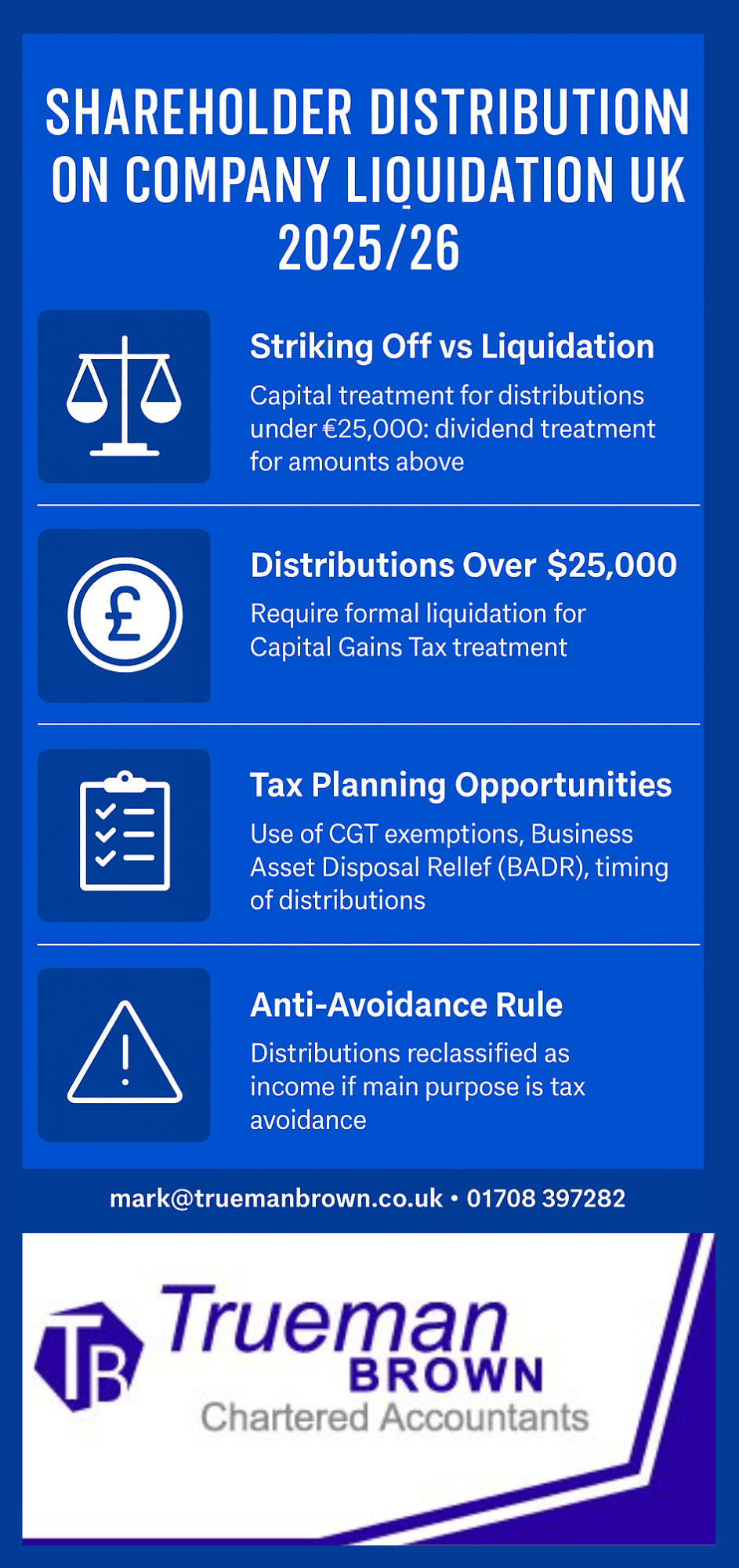Shareholder Distribution on Company Liquidation UK: 2025/26 Tax Guide
When planning a shareholder distribution on company liquidation UK, careful tax strategy can make a major difference.
Whether you’re closing your business for personal reasons or winding down operations, understanding how HMRC treats distributions in 2025/26 is essential to avoid unexpected liabilities.
Why Companies Cease and What Happens to Assets
Companies may cease trading for various reasons—retirement, restructuring, or changing market conditions.
Once liabilities are settled, remaining assets are distributed to shareholders.
The method of this shareholder distribution on company liquidation UK determines whether it’s taxed as income or capital.
Striking Off vs Formal Liquidation
If a company applies to be struck off rather than entering liquidation, any surplus distribution (including share capital) is generally treated as income.
However, where total assets are below £25,000, distributions may be treated as capital gains, eligible for Capital Gains Tax (CGT) rather than dividend tax.

From April 2025, CGT rates remain at 10% (basic rate) and 20% (higher rate), but Business Asset Disposal Relief (BADR) still allows qualifying shareholders to pay only 10% on up to £1 million of lifetime gains.
Distributions Exceeding £25,000
When distributions exceed £25,000, they are automatically treated as dividends—even if part of the intention was liquidation.
In such cases, formal liquidation is the only route to gain CGT treatment on a shareholder distribution on company liquidation UK.
Typical small company liquidation costs remain around £1,500–£2,000, but these costs can be offset by lower tax rates when planned correctly.
Tax Planning Opportunities for 2025/26
Liquidators can sequence distributions to optimise tax. For example, releasing cash before 5 April 2026 and assets after can use two CGT annual exemptions.
Directors can also choose to extract pre-cessation dividends before liquidation to balance income and capital treatment.
Be cautious: HMRC closely examines cases where it appears directors intentionally manipulated distributions to avoid income tax.
The “targeted anti-avoidance rule” (TAAR) still applies in 2025/26, allowing HMRC to reclassify distributions as income where the main purpose was tax reduction.
How Trueman Brown Can Help With A Shareholder Distribution On Company Liquidation UK
Navigating a shareholder distribution on company liquidation UK requires expert advice. The accountants at Trueman Brown can help you minimise tax liabilities, structure your cessation efficiently, and ensure HMRC compliance.
📧 Email: mark@truemanbrown.co.uk
📞 Call: 01708 397262
Our team offers tailored guidance for directors, investors, and business owners preparing to close or restructure their companies.
FAQs: Shareholder Distribution on Company Liquidation UK
Q1: Is the £25,000 capital distribution limit still in place for 2025/26?
Yes, the £25,000 limit remains. Amounts above this threshold require a formal liquidation for CGT treatment.
Q2: Can Business Asset Disposal Relief still apply?
Yes. BADR remains available for qualifying shareholders, reducing CGT to 10% on up to £1 million of lifetime gains.
Q3: Are there changes to dividend tax rates for 2025/26?
The dividend allowance has reduced to £500, and dividend tax rates are unchanged: 8.75%, 33.75%, and 39.35% for basic, higher, and additional rate taxpayers.
Q4: Can I extract assets instead of cash?
Yes, but asset valuation affects whether the £25,000 threshold is breached and may influence your tax treatment.
Q5: Should I consult an accountant before liquidation?
Absolutely. Early advice ensures you structure the shareholder distribution on company liquidation UK in the most tax-efficient way.

Recent Comments